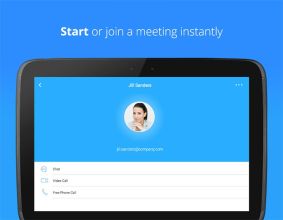In an era where remote work and digital meetings have become staples, Zoom has emerged as a leader in connecting people across the globe. With its rapid adoption by businesses, educational institutions, and social groups, Zoom has proven to be an essential tool in the virtual communication toolbox. As video conferencing becomes more embedded in our daily routines, evaluating Zoom’s capabilities, strengths, and areas for improvement has never been more pertinent. Here, we delve into what makes Zoom a go-to platform and scrutinize the aspects that have room for advancement. The goal is to provide an objective perspective on how Zoom stands up to the demands of modern virtual interaction.
Zooming In on the Good, the Bad, and the Room for Improvement
The platform charmingly simplifies the process of joining meetings with a simple link click or a quick meeting ID entry, bringing a level of convenience that is hard to match. Zoom's intuitive user interface supports features like screen sharing, virtual backgrounds, and HD video and audio quality, which enhance the overall user experience. The app’s robustness is evident in its ability to cater to substantial numbers of participants without significant degradation in performance, thus supporting large-scale webinars and conferences efficiently.
However, despite these strengths, Zoom isn't without its pitfalls. One notable concern is security: incidents of 'Zoombombing'—where uninvited guests disrupt meetings—have raised questions regarding the app’s privacy measures. Zoom has responded with increased security protocols, such as waiting rooms and password protections, yet the reputation damage lingers. Moreover, users have reported various technical issues such as lags or audio inconsistencies during heavy usage periods or in areas with less stable internet connections. These glitches can be significant setbacks for those relying on seamless communication.
Additionally, the free version of Zoom imposes a 40-minute limit on group meetings, which can be disruptive for longer sessions. For those who require more time, a subscription fee is necessary, and this paywall can be a barrier for small businesses or individuals on limited budgets. The learning curve for effectively managing all of Zoom's features and settings can also pose a challenge to less tech-savvy users. Consequently, the need for a user-friendly tutorial or more responsive customer support is clear.
The User Experience Behind Zoom's Digital Curtain
Ultimately, the user impression of Zoom is a blend of satisfaction tinged with cautious optimism. Many users hail the app to foster business continuity during unprecedented times, enabling productivity in the face of adversity. Educational entities and families alike have found it valuable for maintaining connection and continuity. The multitude of available functions provides an adaptable online space that can be tailored to different requirements, and once past the initial configuration challenges, numerous users consider the platform dependable and easy to use.
Yet, alongside the accolades, there is acknowledgment of Zoom’s weaknesses. Concerns over security, occasional performance dips, and the limitations of the free tier are voiced recurrently. Some users express frustration over technical issues or the need for more accessible customer support. The app can be further developed to offer a more robust user experience by accommodating a wider array of network conditions and catering to users with varying levels of expertise.
In view of the aforementioned, it becomes evident that Zoom indeed stands as a pillar of modern communication, its imperfections notwithstanding. Much like any software, Zoom continues to evolve, and with user feedback and technological advancements, it's reasonable to expect that it will address its current deficiencies. The overall positive user experience positions Zoom as a prevalent choice for video conferencing, capable of adapting and scaling to meet the evolving demands of virtual connectivity.
Pros
- Excellent video and audio quality
- Easy to use
- Mobile app is easy to use
- Lots of features
- Clean and simple interface
- Excellent for online meetings
- Excellent for webinars.
Cons
- Not free
- Requires a good internet connection
- Can be challenging to use with large groups
- Limited support for international numbers
- No integration with third-party tools.
















